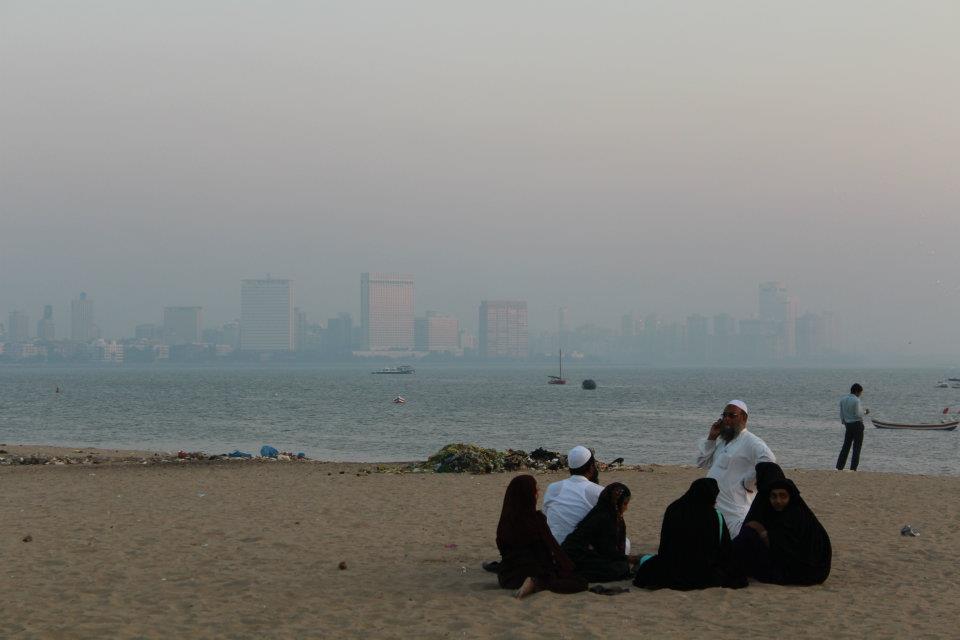Happy Hump Day! On this fine Wednesday my amazing friend Tim from Urban Duniya takes our taste buds on an educational journey in the land of this delightful spiced rice dish. Grab a cuppa hot, sweet chai and be prepared for a ‘virtual‘ biryani food coma from gorging on this delicious post.
I’ve traveled to and through many countries, but it will be no surprise to my friends when I say that my journeys in the Indian subcontinent have affected me the most. After all, it was the subcontinent that have given me love, a renewed spiritual awareness, and my new home and life. I first tasted the subcontinent before I visited there, in the form of fish biryani at a Pakistani canteen in the Omani coastal town of Sur. My mouth was filled with the aromatic rice; spicy, bold, but daring me to take another spoonful. That was January 2006, and I had little idea then how symbolic that first taste of biryani would be, as the subcontinent kept challenging me, but then drawing me back over the years.
Biryani is a difficult dish in many ways. To begin with, it’s difficult to make; a proper biryani should have layers of rice and meat which are cooked separately, then steamed together to allow the complex flavours to infiltrate the whole pot. It’s often served with crispy onions on top, and sides of chopped salad, smooth raita (whipped yogurt), pickle (usually marinated lime, chilli or mango), sometimes a boiled egg, sometimes korma gravy, and sometimes a pappad (popularly referred to as a ‘pappadum’ in the West). Biryani is therefore more of a banquet and a ritual, rather than a simple dinner thrown together, and it has its roots in the Mughal dynasty, the extravagant Muslim royal family of northern India (the family who built the Taj Mahal).
Secondly, the actual ownership of biryani is difficult to pinpoint, as history is so often disputed. While it was probably developed in Mughal India sometime between the 16th and 19th centuries, it may have existed much earlier than that. Whenever it was invented, it has come to be associated with the Indian Muslim tradition. Pakistan (where I now live part-time) was created in 1947 as a homeland for Muslims in the Indian subcontinent, so it’s logical that biryani would be the national dish of Muslim Pakistanis. However this draws the ire of Indians, who point out that the cities where biryani was made famous; Delhi, Lucknow and Hyderabad; are all in modern-day India.
Biryani is further complicated by the fact there is no specific recipe for it – the dish changes depending on who you ask, and where you go. And of course, this makes for some interesting experiences on travels through the region. After my Pakistani fish biryani experience in Oman, I touched down in Pakistan’s heaving port city of Karachi where I would feast on more fish, seafood and prawn biryani, all caught fresh out of the adjacent Arabian Sea.
The spices were intense and aromatic; I still remember walking along the tough streets of Karachi where roadside stall owners would lift the lids on their huge pots of food, allowing the scent to waft out across the pavement, a kind of sensual marketing campaign. Karachi is considered the home of Pakistani biryani; there it is the spiciest, and the most authentic. The rice is fluffy and the meat varied – everything from chicken through to seafood – and the spices come with a scorching accent of chilli.
My next encounter would be in Melbourne, Australia in 2008 when a colleague from Mumbai, India brought her mother’s chicken biryani to work. This was heavier, the rice more glutinous, and the chicken oilier than what I had eaten in Pakistan. The dish was very aromatic, but the spices were somehow earthier, grungier, somehow heavier but not ‘hotter’. Less chilli, more garam masala, turmeric and cumin, perhaps? In 2012 when I went to Mumbai, I realised that this type is considered ‘the real deal’ by people living in Mumbai, many of whom come from across India to work to make their dreams a reality in India’s largest metropolis.
On the streets of old Delhi, India in 2010 I discovered another style, a kind of hybrid of Karachi’s fluffy rice and Mumbai’s heavily accented spices, preferably served up with mutton, the kind of heavy, bold meat to accompany Delhi’s bold reputation as India’s capital; a place which can make or break you, a place where the Muslim Mughal tradition lives on. The heavy Mumbai-like spices, a nod to the India of which Delhi is capital city; and the fluffy Karachi-style rice with mutton, a Muslim favourite, reminding me that I was firmly in northern India and only a few hundred kilometers from the Pakistani border.
Hyderabad biryani, on the other hand, is a progression in the other direction. I visited Hyderabad, India in late 2012 and discovered a modest city with a glorious past. Like the heavy, oily, Mumbai biryani that I tasted, the Hyderabad biryani is thick with steam and spice, and the spices this time are hotter. Beneath the fiery chilli there were layers of dusty turmeric, tantalising cumin and dark garam masala. The biryani I ate in Hyderabad, southern India, was the furthest location from Oman and Karachi where I first fell in love with the dish, and in taste terms, it was also the most different. And like everything in southern India, Hyderabad biryani was subtly, yet confidently, different.
It was then that I realised that my journey through Pakistan and India had been mirrored by my encounters with this dish; from the first taste of fish by the sea at an expat’s canteen in Oman, to the peppery rice I was served in the harsh streets of Karachi, the melange of spices in Mumbai’s biryani symbolic of the millions of Mumbaikers who hail from elsewhere, Delhi’s Indian Muslim concoction, and Hyderabad’s beautifully complex dish which is claimed by many to be original.
There are so many more – vegetable biryani made in Hindu communities; the over-spicy biryani prepared in the isle of spices, Sri Lanka; camel meat biryani in the deserts of Pakistan. Biryani is not just a dish, it is a tradition and a matter of cultural expression for Indians, Pakistanis, expats, locals, workers, royals, and travellers. One does not simply taste biryani, one travels biryani, and it’s a journey I’m so thankful to be travelling on.
Tim would love to stay in touch… So please friends, be sure to pop over to his website Urban Duniay ~ Facebook ~ Instagram or Twitter and say hi.
Dear reader, I’d love to know what food you’ve eaten in a foreign country that you have tried making at home, or order when ever you see it on a restaurant menu?










